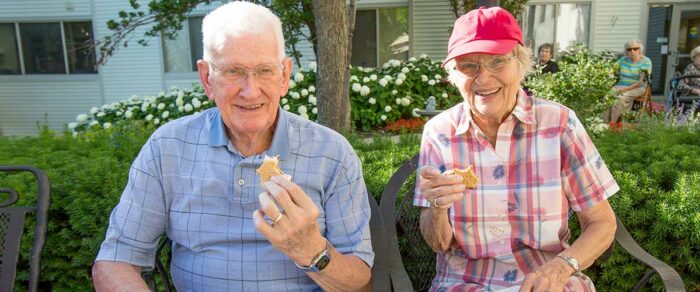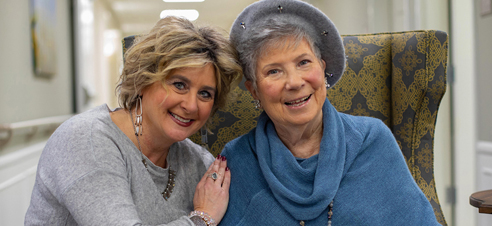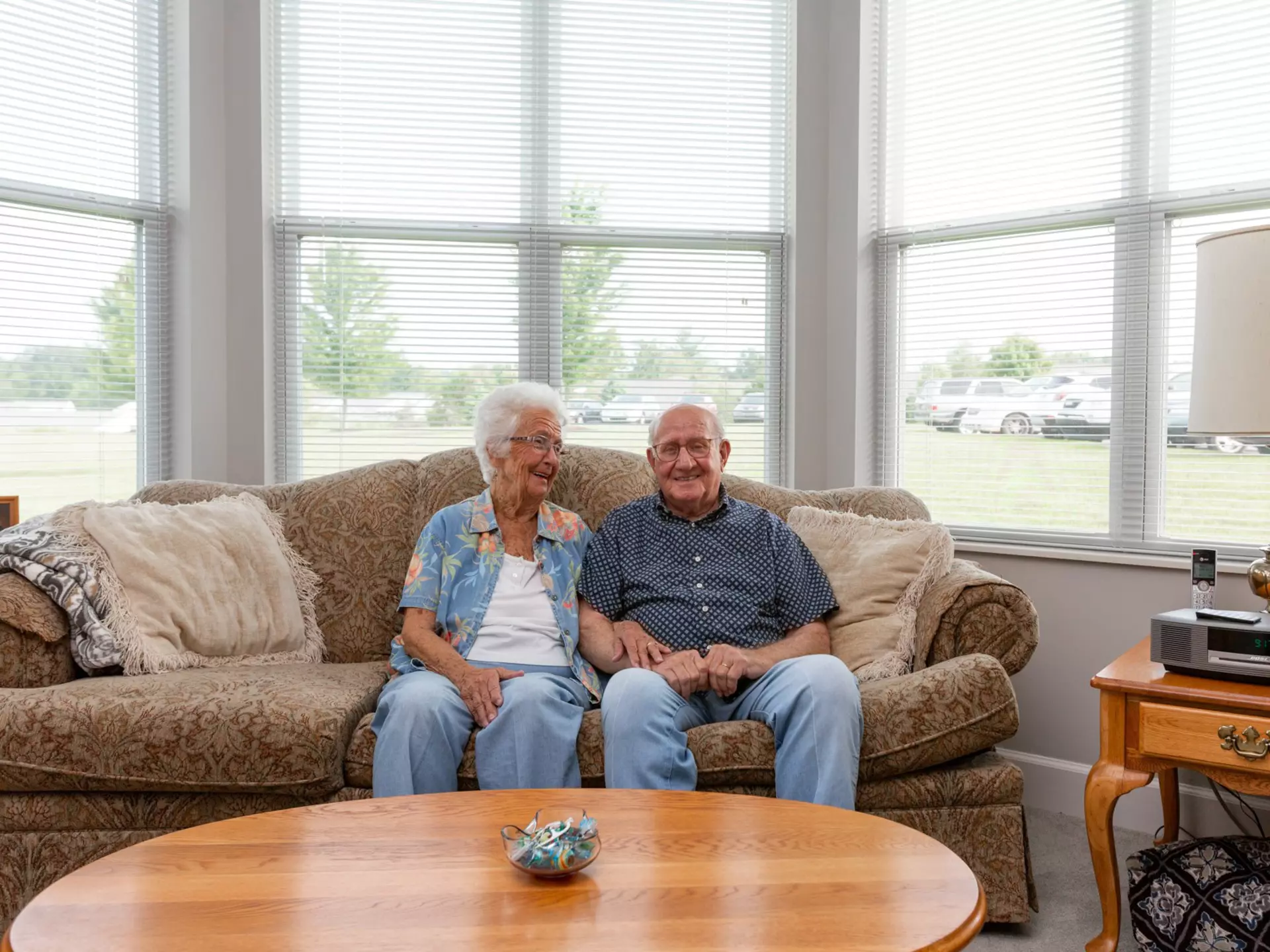It’s natural to want to help our parents as they age. However, as their needs grow over time, it can start to become challenging to support them on your own. At this stage in your loved one’s journey, it’s important to consider bringing in more assistance. While nursing homes may be the go-to choice for some families, there are many other support services that may be worth looking into.
In this blog, we’ll discuss a few nursing home alternatives to help you find the best support that truly fits your family member’s needs and circumstances.
Understanding Nursing Homes
Nursing homes are designed to support individuals with ongoing medical needs. These communities usually have trained professionals, such as dietitians, registered nurses, and therapists, to handle various health needs. Alongside benefiting from specialized support, residents usually receive help with activities of daily living (ADLs), including bathing, feeding, dressing, and more.
Since the vast majority of residents in nursing homes usually have ongoing medical needs, these communities may not typically provide as many activities and programs for residents. Generally, if your loved one doesn’t require round-the-clock medical assistance, there may be other options that better fit their needs and lifestyle.
As you seek more support for your loved one, it might help to understand the various options available to you. Here are a few common nursing home alternatives you might encounter during your search:

Senior Living Communities
Senior living communities are often suitable for older adults who do not have ongoing medical needs that require constant care, but they require some assistance in their daily routine. Many of these communities provide a good mix of amenities and support services to cater to residents with various needs and lifestyles.
Here are some popular types of senior living communities you might come across:
Independent Living Communities
Independent living communities are designed for seniors who want to enjoy retirement alongside a loving community of peers. These communities usually include convenient amenities, such as beauty salons, fitness centers, and transportation options, to help make residents’ lives more comfortable and enjoyable.
Additionally, daily chores like meal preparation, laundry, and housekeeping are taken care of, so residents can spend more time doing the things they love. You’ll also find plenty of planned activities and programs to help you meet new friends.
Independent living costs can range from $1,500 to $6,000 monthly, depending on several factors, such as your needs and preferences, the location of the community, the services and amenities offered, and more.
Since residents in independent living communities are generally healthy older adults, this option may not be ideal for someone who needs extensive medical support or around-the-clock assistance.
Enhanced Living
Enhanced living is a great option for older adults who may need assistance with housekeeping chores and personal care while maintaining an independent lifestyle. Residents typically live in their own apartments with access to on-site caregiver services or medical attention when the need arises.
Enhanced living is an “in-between” service offering that bridges independent living and assisted living. It’s designed for those who can benefit from personalized support and care while enjoying the residential setting and autonomy of independent living. With enhanced living, you receive services unique to your needs, and can expand or reduce those services at any time.
While enhanced living can be a great option for seniors who need some assistance to get through their routine, it may not be ideal for someone who needs specialized medical support around the clock.
The monthly costs of enhanced living typically range between $4,300 and $6,000, but they can vary widely between communities.
Assisted Living Communities
This living arrangement is often an excellent fit for people who need a little more assistance throughout their day. Residents in assisted living communities usually live in private or semi-private apartments with access to shared spaces and 24/7 caregiver support.
Alongside receiving assistance with activities of daily living (ADLs), like eating, bathing, and housekeeping, residents may also benefit from delicious culinary options, planned activities and events, and plenty of opportunities to socialize with others.
The average monthly cost of assisted living is around $4,500 per month, although that may vary between communities.
While assisted living can be a wonderful option for many seniors, it may not be the best fit for someone who is still able to manage daily tasks on their own.
Memory Care
It’s normal for older adults to experience a decline in their cognitive abilities as they age. As your loved one’s memory impairments progress, it’s usually a good idea to seek out the right assistance. Memory care communities are specifically designed to support the unique needs of individuals with Alzheimer’s, dementia, or other memory impairments.
Most memory care neighborhoods feature thoughtfully designed indoor spaces, secure entrances, and safe outdoor areas where residents can move around freely. Caregivers are often available to provide 24/7 supervision, alongside assistance with activities of daily living (ADLs). You’ll also find plenty of cognitive activities and programs to help keep residents engaged.
Memory care communities can cost between $3,000 and $10,000 per month, depending on a person’s unique needs.
While senior living communities are an attractive option for many older adults, they may not be a good choice for people with complex medical needs like Congestive Heart Failure (CHF), Chronic Obstructive Pulmonary Disease (COPD), or complications from diabetes. However, if your loved one is relatively independent but could benefit from light support, convenient access to amenities and plenty of opportunities to socialize with others, a senior living community might be a good option for them.
The costs of senior living may vary widely, depending on the type of community and other important factors, including your family member’s needs, accommodation options, location, and more.
Adult Day Care Facilities
Adult day care facilities provide support and supervision for older adults, allowing family caregivers to take a break or focus on other responsibilities. This arrangement works well for family caregivers who need extra help supporting their loved ones during the day.
Most adult day care facilities offer planned social activities, meals and snacks, personal care, and more. In some cases, medical assistance and transportation services may be provided.
The cost of adult daycare services typically ranges from $50 to $150 per day, depending on the services provided and the location. For full-time support, costs could total between $1,000 and $3,000 per month.
In-Home Care Services
In-home care allows older adults to receive assistance in the comfort of their homes. Typically, an individual or their family will hire a trusted caregiver to help with day-to-day needs, which might include personal care, light housekeeping, and assistance with medical needs. This arrangement is an excellent choice for older adults who wish to remain in their own homes for as long as possible while receiving assistance.
One of the many reasons families opt for in-home care is that the support can be tailored to meet their loved one’s specific needs. Depending on the level of support required, caregivers may provide assistance for a few hours a day, on a daily basis, or full-time.
While in-home care offers many great perks, caregiver costs can quickly add up, especially if someone requires specialized support or assistance full time. The national median cost of home health care is around $24 per hour or $4,000 per month. However, due to various key factors, including the cost of living and demand for caregivers, costs may vary significantly.

Respite Care
Respite care communities offer temporary support to individuals with varying needs, often when recovering from an injury or surgery. These services can be provided at home or in a senior living community for a few hours, days, or even longer. Respite care is a good option for families seeking temporary support for their loved one’s needs, and as such, it may not be ideal for those looking for a long-term solution. Costs usually range between $100 and $300 per day, depending on the location and services needed.
Care Homes
Care homes are typically cozy, family-style homes designed to support individuals who need help with certain tasks but do not require full-time nursing support. Residents may receive help with activities of daily living (ADLs), as well as medical support, ensuring they feel cared for and comfortable. Because care homes are often smaller, residents may enjoy more personalized attention.
While care homes are often more affordable compared to larger communities, they may not offer the same level of support or lifestyle. Costs usually range from $1,500 to $3,500 per month, depending on where you live and your loved one’s specific circumstances.

Continuing Care Retirement Communities (CCRCs)
Continuing Care Retirement Communities (CCRCs) offer a range of services to help support individuals through the various stages of aging. These communities usually provide a full spectrum of care, from independent living to skilled nursing services, all within the same community. Many also offer plenty of social activities, recreational amenities, and medical services to help support residents with a wide range of needs.
CCRCs are an option for families seeking long-term solutions or seniors who want peace of mind, knowing they won’t have to worry about moving to another community, even if their needs change over time. However, it’s important to keep in mind that some CCRCs charge entrance fees, which can be costly and range from $140,000 to more than $2 million, depending on the location and the specific services required.
Medicaid HCBS
Medicaid Home and Community-Based Services (HCBS) allow qualified seniors who need long-term support to receive services at home or in their senior living community rather than moving into a nursing home. HCBS programs offer a range of services, like assistance with personal care, housekeeping, and transportation, to help individuals live independently in their own homes for as long as they desire. Medicaid typically covers most or all of the support costs for those who qualify.
Medicare PACE
The Program of All-Inclusive Care for the Elderly (PACE) is an option that provides essential services to seniors who are eligible for both Medicare and Medicaid. This usually includes medical care, transportation services, and personal assistance. Similar to Medicaid HCBS, PACE is covered by Medicare and Medicaid for eligible seniors.
Hospice Care
Hospice care provides compassionate end-of-life support for individuals and their family members. They typically offer essential services like pain management and assistance with activities of daily living (ADLs) for people with terminal conditions. Many hospice homes also provide counseling to help individuals and family members cope with the emotional challenges during this difficult time.
Evaluating Your Choices
Now that you’re familiar with some nursing home alternatives, let’s take a look at how they compare to one another:
| Living Option | Level of Care | Typical Services Provided | Ideal For | Cost Considerations |
|---|---|---|---|---|
| Senior Living Communities | Low to Moderate | Social activities, culinary options, housekeeping, support ADLs | Seniors who are are looking for a welcoming community with support services | $2,500 to $6,000/month, depending on the type of community |
| In-Home Care Services | Low to Moderate | Personal care, housekeeping, medical services (if needed) | Seniors who prefer staying at home while receiving assistance | $24 an hour/$4,000/month |
| Continuing Care Retirement Communities (CCRCs) | Low to High (depends on need) | Tiered care levels on one campus, comprehensive support with meals, housekeeping and 24/7 medical care | Seniors and families seeking an all-inclusive arrangement | $140,000 to $2 million entrance fee, in addition to monthly costs |
| Adult Day Care Services | Low | Social activities, meals, personal care, light medical care | Families seeking short-term support | $50 to $150/day |
| Respite Care | Low | Temporary support for a few hours to days at home or in a community | Family caregivers who need a break or time for personal tasks | $100 to $300/day |
| Care Homes | Moderate | Personal assistance, meal prep, and assistance with ADLs | Seniors who need assistance but do not require full-time nursing services | $1,500 to $3,500/month |
| Medicare PACE | Moderate to High | Medical support, transportation, personal assistance, meals, and social activities | Seniors eligible for both Medicare and Medicaid who want to stay at home | Covered by Medicare and Medicaid for eligible individuals |
| Medicaid HCBS | Moderate | Personal care, transportation, adult day care, home modifications | Seniors who need long-term support but want to stay at home | Typically covered by Medicaid for eligible individuals |
| Hospice | High | Pain management, personal care, emotional and spiritual support | Families seeking compassionate end-of-life support for their loved one | Typically covered by Medicare, Medicaid, and private insurance |
Step-by-Step Framework for Picking a Living Option
Choosing a living option for someone you love can be a complex and emotional decision, especially when you have to act quickly. Here’s a step-by-step guide to help you make a confident choice:
- Assess the Level of Support Needed: First, begin by assessing your loved one’s physical, emotional, and medical needs. Do they require assistance with activities of daily living (ADLs), like bathing, dressing, or eating? Does your family member need ongoing medical assistance or specialized attention for conditions like dementia or chronic illness? Understanding the level of support required can help you get a clear sense of what’s needed.
- Consider Financial Resources: It’s also important to plan for the potential costs and how to pay for them. Determine how much you can spend and what financial assistance is available. You may want to bring in a financial advisor to help you plan your resources effectively. Additionally, consider getting long-term insurance coverage to help cover some of the expenses.
- Evaluate Personal Needs: Think about your loved one’s lifestyle needs and the things that matter to them. Some seniors may prefer the vibrant and social atmosphere of a senior living community, while others may wish to receive assistance from the comfort of home. If you’re considering additional support for someone you love, it’s important to listen to their wishes and concerns, and involve them in decision-making as much as possible.
- Explore Available Options in Your Area: Research and reach out to a few options that seem appealing to you. It’s always a good idea to organize tours of potential communities to get a feel for what it’s like to live there. During your visit, talk to employees and other residents, check out the living spaces, and if possible, try the food. This can also be a great opportunity to ask any important questions you may have.
- Consider Future Support Needs: It’s normal for our needs to change over time. If you anticipate changes in your family member’s support needs, it may be wise to choose a community that can adapt to their evolving requirements. If needed, consider seeking advice from professionals such as doctors, social workers, or geriatric care managers. They can help guide you toward the best support option for your loved one’s specific circumstances.
- Make the Decision and Plan the Move: Carefully weigh your options and choose the one that truly feels right for your family member. If they’re transitioning to a new home, you may need to help them prepare for the move ahead of time.
- Stay Involved: It may take some time for your loved one to adjust to their new surroundings, and that’s completely okay. After the move, try to stay involved. Check in regularly to see how they’re doing. If you live nearby, visit as often as you can. Ask them how they feel about their new home.
StoryPoint Group Is Here for You and Your Loved One
At StoryPoint Group communities, we recognize the many challenges that families go through in finding the best support for their loved ones. Please know that you’re not alone — we’re here to help guide you and your loved one every step of the way.
If your family member could benefit from additional assistance, we’d love to help. Call today at 1-844-275-9990 or schedule a tour of a StoryPoint Group community near you.













